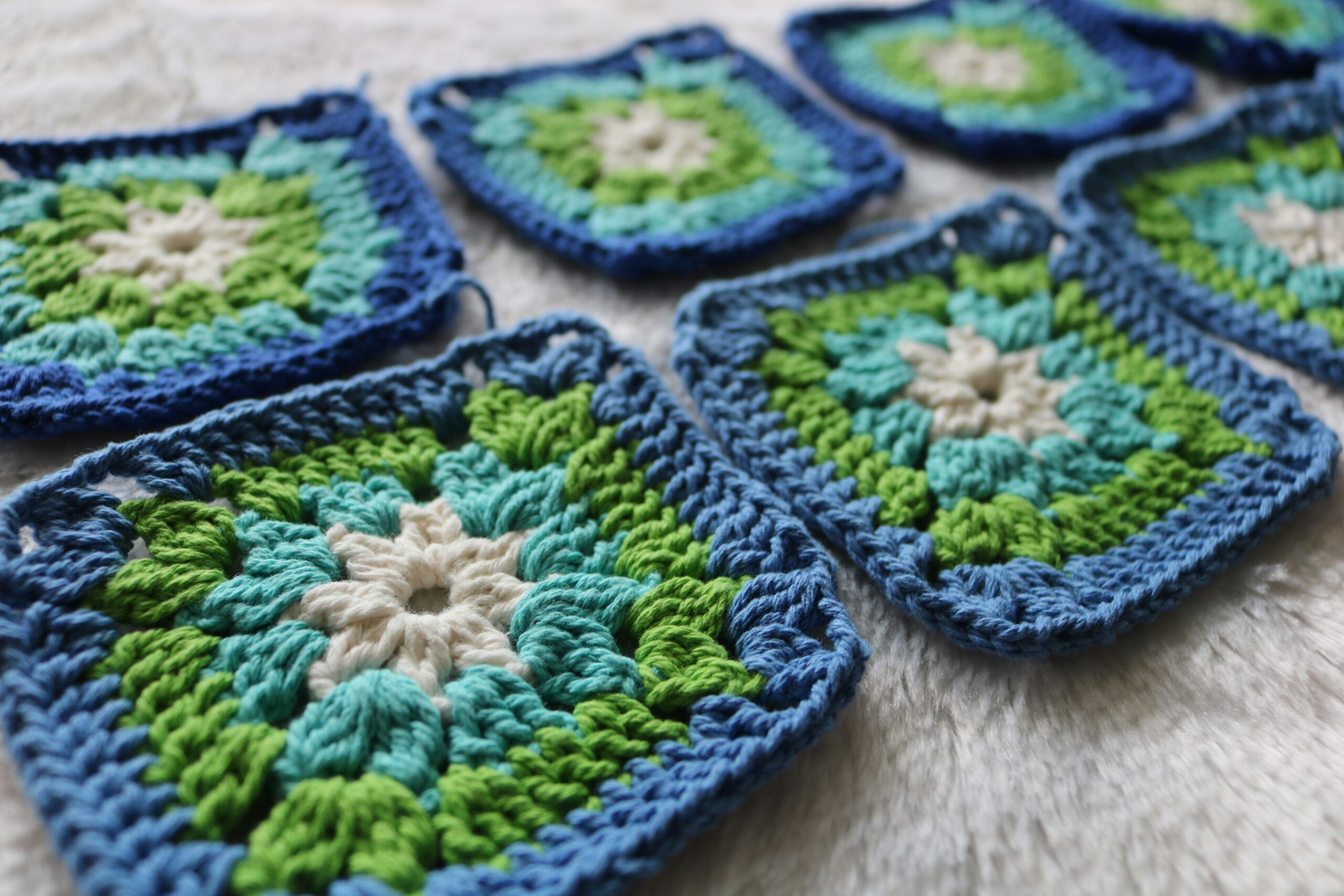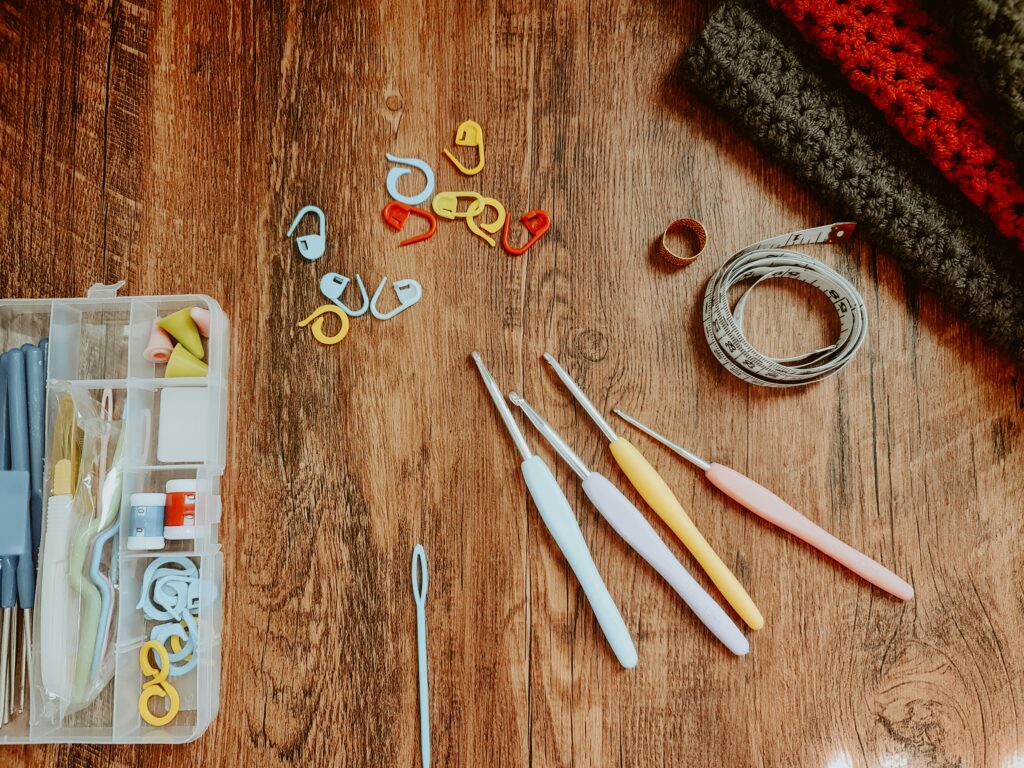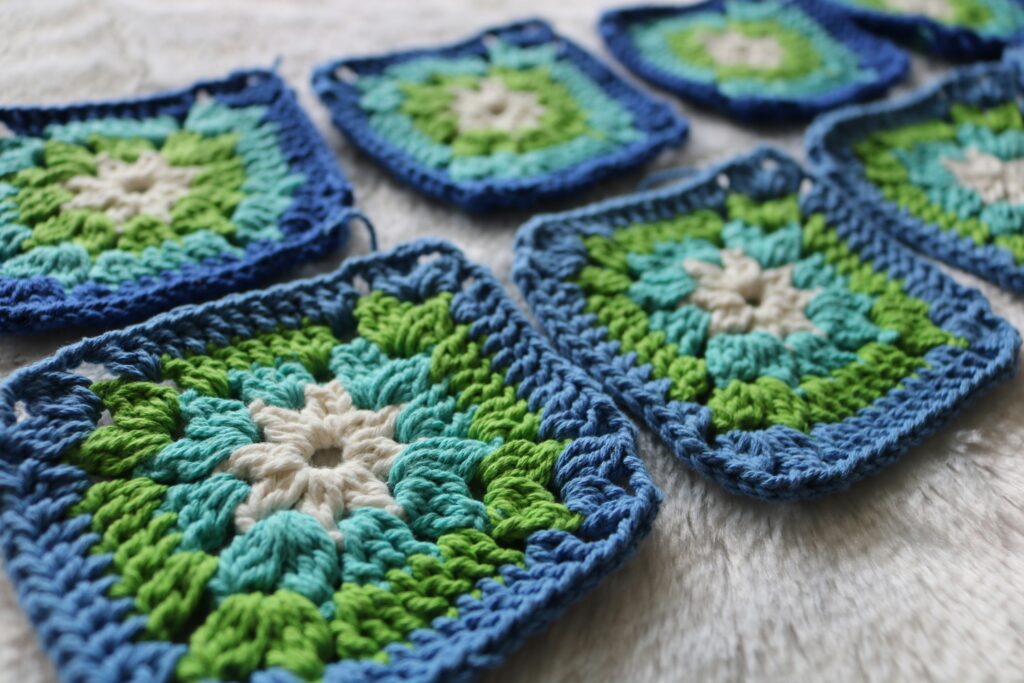
A beginner’s guide to crocheting: Tips, tricks, and techniques
Crocheting is one of the most rewarding and accessible crafts you can learn, whether you’re looking to create cosy blankets, stylish scarves, or personalised gifts for loved ones. It’s an enjoyable, relaxing hobby that can also be incredibly productive, as you watch your creations take shape with each stitch. If you’re new to crochet, the process might seem a little daunting at first, but once you get the basics down, you’ll be hooked (pun intended).
This beginner’s guide will walk you through everything you need to know to get started with crocheting, from choosing the right tools to mastering essential stitches and techniques:
- Getting started with the right tools
- Mastering basic stitches
- Crochet techniques to make your projects shine
- Common mistakes and how to avoid them
- Don’t be afraid to make mistakes: Practice makes perfect!
Getting started with the right tools

Before you dive into the world of crochet, it’s important to have the right tools. Don’t worry, though – you don’t need to spend a fortune on fancy equipment to get started. Here’s a quick rundown of the essentials:
Crochet Hook: The crochet hook is the most important tool in your kit, and fortunately, they come in all shapes and sizes. Beginners usually start with a medium-sized hook, such as a 4mm or 5mm (US size G or H), which is versatile enough for a variety of yarn types. Hooks are made from various materials, including aluminium, plastic, and bamboo, so choose one that feels comfortable in your hand. A smooth, lightweight hook is usually the best option when you’re starting out.
Yarn: Yarn is your next essential tool. The type of yarn you choose will depend on your project, but as a beginner, it’s best to start with a medium-weight yarn (often referred to as worsted weight) in a light colour. Lighter colours help you see the stitches more clearly, and worsted weight yarn is easy to work with. Look for yarns made from natural fibres like cotton or wool, or synthetic yarns such as acrylic, which are affordable and easy to care for.
Scissors: A good pair of sharp scissors is essential for cutting your yarn when you finish a project or when you need to make adjustments. While you can use any pair of scissors, investing in a small, sharp pair specifically for your crochet work can make a huge difference in precision.
Tapestry needle: Though not strictly necessary for your first few projects, a tapestry needle (also known as a yarn needle) is useful for weaving in loose ends and finishing your work neatly. It’s an important tool once you start creating larger projects.
Mastering basic stitches
Once you’ve gathered your tools, it’s time to start learning the basic stitches that will form the foundation of your crochet skills. Here are three of the most fundamental stitches you’ll need to know:
Chain Stitch (ch): The chain stitch is the building block of crochet. To make a chain stitch, simply create a loop with your yarn and pull the working yarn through. Repeat this process to create a chain of stitches. Chains are often used to start your projects and are the foundation for many other stitches.
Slip Stitch (sl st): The slip stitch is used to join stitches or move your work forward without adding height. To make a slip stitch, insert your hook into the stitch, yarn over, and pull the yarn through both the stitch and the loop on your hook. Slip stitches are often used to create smooth, seamless edges.
Double Crochet (dc): The double crochet stitch adds height and texture to your work, making it ideal for blankets and scarves. To make a double crochet, yarn over, insert your hook into the stitch, yarn over again, and pull through. You should have three loops on your hook. Yarn over once more and pull through the first two loops, then yarn over again and pull through the remaining two loops. This stitch adds a lovely texture to your projects.
Once you’re comfortable with these basic stitches, you’ll be able to start creating simple patterns and projects.
Crochet techniques to make your projects shine
As you gain confidence in your basic crochet skills, it’s time to focus on improving your technique. There are a few key tips that will help take your crochet projects to the next level:
One of the most important aspects of crochet is maintaining consistent tension. If your stitches are too tight, they’ll be difficult to work with, and if they’re too loose, your project will look uneven. The key is to find a comfortable balance. Practice making small swatches of stitches, paying attention to how tightly or loosely you’re holding the yarn, and try to keep your tension even throughout your work.

When following patterns, it’s crucial to count your stitches accurately to avoid mistakes. Use a stitch marker to keep track of the beginning of each row or round, or count your stitches as you go along. This helps you keep your work on track and ensures you don’t accidentally skip or add extra stitches.
When joining multiple pieces or finishing off your work, take care to join your stitches neatly. Use slip stitches or whip stitches to create a seamless finish and avoid bulky seams.
Common mistakes and how to avoid them
As a beginner, it’s normal to make a few mistakes along the way. But don’t worry – every mistake is a learning opportunity, and with practice, you’ll be able to avoid them. Here are a few common errors beginners make and tips on how to correct them:
- Twisted foundation chains: A twisted foundation chain can ruin the entire project. To avoid this, make sure your chain isn’t twisted before you begin crocheting into it. Lay your chain flat and check that it forms a smooth line.
- Uneven tension: As mentioned earlier, uneven tension can make your project look messy and uneven. Keep practising to develop an even tension, and don’t be afraid to pull out stitches and redo them if needed.
- Forgetting to count: Losing track of your stitches is a common mistake, especially in larger projects. Count your stitches regularly and use stitch markers to help keep your place.
Don’t be afraid to make mistakes: Practice makes perfect!
Crocheting is all about practice. The more you crochet, the better you’ll get, so don’t be discouraged if things don’t turn out perfectly on your first try. Start with small projects like dishcloths or scarves, and gradually work your way up to more complex patterns.
Remember, crochet is meant to be enjoyable, so take your time and embrace the learning process.
Let’s look at what we’ve learned today:
- Buy yourself the basic equipment: Crochet hooks in a few common sizes, matching and enough (!) yarn, good scissors and some tapestry needles will do for the beginning
- Familiarise yourself with the basic stitches and their abbreviations: Chain stitch, Single Crochet, Double Crochet and Slip Stitch should help you get into most projects
- Work on consistent tension, count stitches correctly and finish off as neatly as you can
- Keep your foundation chains clean and untwisted, work on that tension and if necessary, find ways to keep track of your stitches, such as a notebook or notes next to the crochet pattern if printed out
- Don’t be afraid to make mistakes – it makes you better at what you do!
As you continue practising, you’ll develop your own rhythm, and before long, you’ll be creating beautiful, handmade pieces that you can proudly call your own. Keep crocheting, stay patient, and most importantly, have fun with it!


